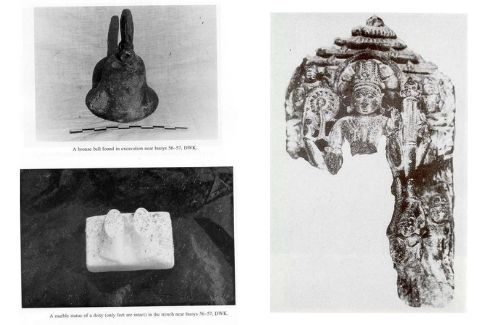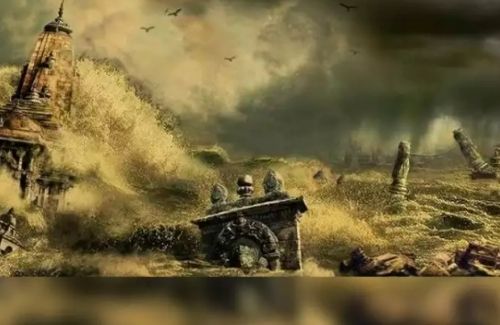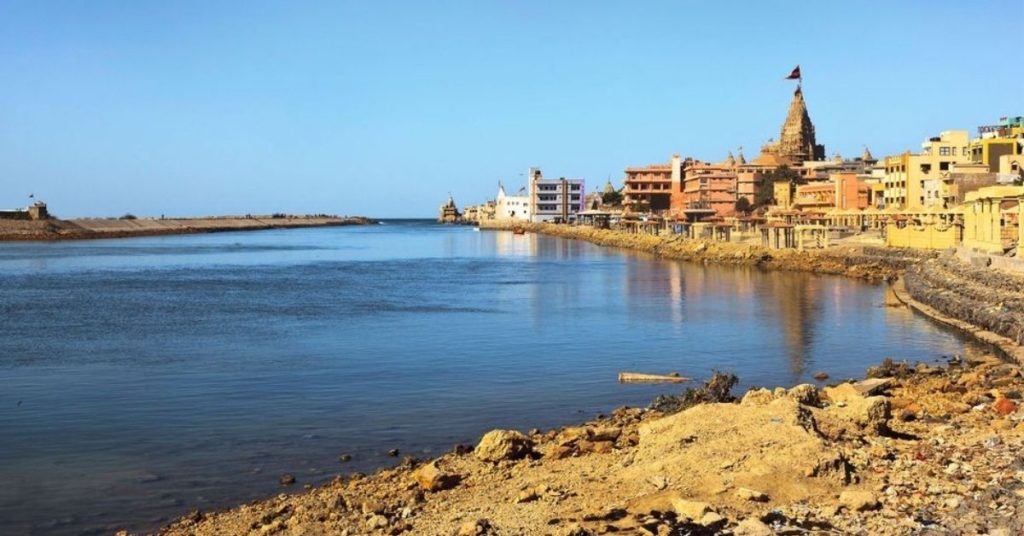Dwarka – you will be amazed to know that this city of Krishna is one of India’s seven revered ancient cities. Dwarka City is famous as a pilgrim place for the Hindus, but its fame is not just limited to this aspect. Also known as a submerged city, it has immense archaeological implications on modern history. To this date, archaeologists are still trying to unearth the remains of the ancient town Dwarka so that they can prove its existence.
According to popular folklore, the city has sunk upon Lord Krishna’s death. With an 84 km area located at the confluence of the Gomti River and the Arabian Sea, the saga Mahabharata mentions it as the ancient kingdom of Lord Krishna.
The Physical Existence of Dwarka:
Various archaeologists have made several attempts to find evidence related to the ancient city in the past. In the process, many artifacts have come to light. Different stones, blocks, and murals come up from time to time. However, one can not know the exact age of these structures through some research estimates it to range between 3000 to 1500 years B.C. or from the Middle Ages. Now, the archaeological community is trying to find the remains of the city walls to find the precise area of the settlement.
Also Read: Netaji Subhas Chandra Bose: Women in Netaji’s Thought
Devbhoomi Dwarka is towards the west coast of Gujarat. Moreover, it is one of the best-studied underwater cities in India. Going back to the ancient Hindu scriptures and texts, you will find that King Salva had attacked Dwarka. This city was attacked with flying machines, known as ‘Vimana’ and other sophiscated weapons as the tale of the battle goes. The attack was so huge and sudden that the inhabitants had little time to respond. So, the city was eventually converted into ruins. Lord Krishna had counter-attacked with his weapons while traveling on a ship. According to fables, Dwarka had more than 900,000 palaces. The palaces were constructed with crystal silver and emeralds. You will find an elaborate system of boulevards, markets, assembly houses, and temples.

The Reality of Dwarka:
The archaeological excavations conclude that the city was the trade gateway between Arabic and Indian areas. Sandstone walls, city grids, and road plans have been unearthed. The ruins have been found some 70 feet below the sea. The remains point towards the dates that go back, at least 9,000 years. It was also supposedly one of the busiest ports back in time.
Archaeological Survey of India dealing with marine archaeology started the exploration in 1988. Initially, the questioning revolved around the temple of Samudranarayan. From the very beginning, the quest aimed at unearthing the massive stone structures that were found near River Gomti. India’s submerged city Dwarka has enticed one and all from the very beginning.
Progress of Research:
Archaeologists have been continuously studying if the remains found underwater near the Gujarat coast resembles the city in the days of the Mahabharata. The community is trying to unearth more evidence for the same.

You should know about the ancient city Dwarka from all that remains of the Hindu scriptures passed on through generations. Devbhoomi Dwarka built on six blocks was protected by sandstone structures from all sides. You can compare the system to the Harems.
Many warehouses have been structured along the Gomti, where small ships used to be anchored. Accidentally discovered by the Oceanographers from India’s National Institute of Ocean Technology, who were conducting a survey of pollution, it has been proved that Dwarka City existed. It is said to have submerged sometime in the 2nd Millennium B.C. upon Lord Krishna’s death. Another important piece of evidence that points towards its existence is the finding of mudras. Rich cultural underwater heritage has been traced. So, it is indeed a great treasure of India.
If one goes by the comparative study and archaeological findings, there are possibilities that Dwarka is older than Chinese or Egyptian civilization.



2 Responses